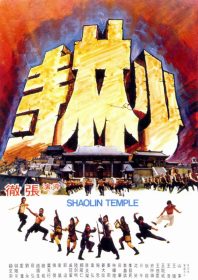
There’s an epic sensibility to this accomplished Shaolin film from Chang Cheh, marking the culmination of his work with longtime collaborators Ti Lung and David Chiang, and the start of his output with the so-called ‘Venoms mob’, including Taiwanese stunt-people like Philip Kwok, Chiang Sheng and Lo Meng, each of whom have supporting roles. To some extent, it also marks a culmination Cheh’s work with Fu Sheng, taking his fourth and final run-out as Fong Sai-yuk at a time of change for the actor, who was eager to work with new directors. Then there’s the absence of fight choreographers Lau Kar-leung and Tong Gaai, who were so integral to the original Shaolin cycle. It is interesting to consider whether any of these behind-the-scenes machinations play into the film’s distinctly passionate tone; it feels like a final flourish from a Shaw Brothers team determined to prove who – at the height of the international kung fu boom – were the real masters of the kung fu film. Interestingly, the film works as a precursor to the Shaolin cycle, being the first to depict life inside the temple before its destruction at the hands of the Manchus. It depicts the daily routines of learning, meditation, discipline, spirituality, training and endurance, as well as its roots in southern Chinese kung fu systems: wing chun, tiger and crane, pole form and chain-whip, plus a large section is dedicated to the fabled ‘wooden men’ which guard the temple exit. The film follows the Shaolin council who must decide on whether to welcome outsiders with rebellious beliefs into its hallowed and apolitical chambers, knowing full-well how the move will be interpreted as a provocation by the Manchu-backed Ching government. It also highlights the traitors who betrayed their trust, and the defeated Ming soldiers who are welcomed into the fold. These young boys are given seemingly menial tasks like stoking fires, cooking and working in the library, which – unbeknownst to them – deceptively teaches them the rudiments of kung fu. Lau Kar-leung would later expand on this concept for his 1978 masterpiece, The 36th Chamber of Shaolin. In 1982, the film would be adapted by filmmakers in Mainland China with their own version, starring Jet Li, but much of the myth-making starts here, told with typical blood-letting gusto by Chang Cheh.
AKA: Death Chambers.
- Country: Hong Kong
- Action Director: Chen Hsin-I, Chen Jih-liang, Chiu Wai, Hsieh Hsing
- Directed by: Chang Cheh
- Starring: Alexander Fu Sheng, Bruce Tong Yim-chaan, Chi Kuan-chun, David Chiang Da-wei, Frankie Wai Wang, Johnny Wang Lung-wei, Philip Kwok Chun-fung, Ti Lung, Tony Liu Wing, Wong Chung, Yueh Hua
- Produced by: Run Run Shaw
- Written by: Chang Cheh, Ni Kuang
- Studio: Chang's Film Company, Shaw Brothers












